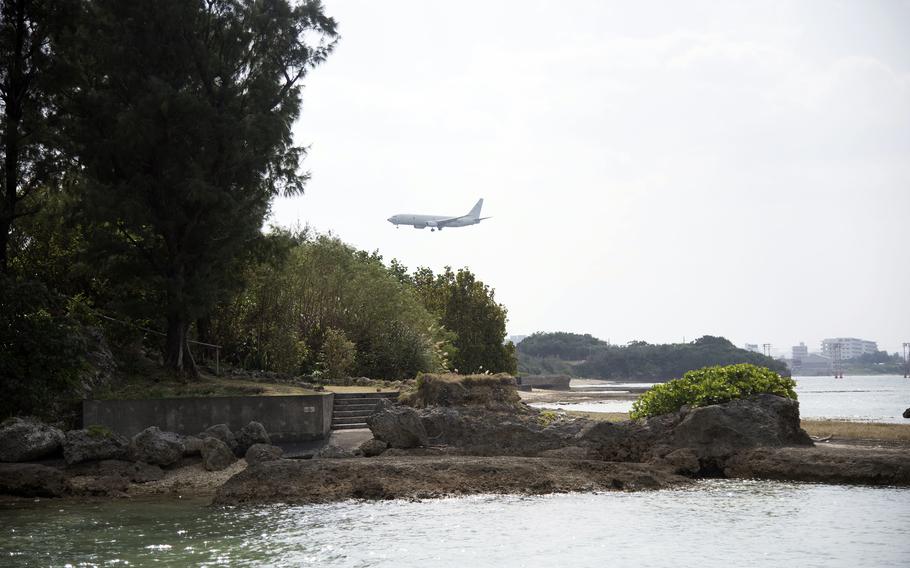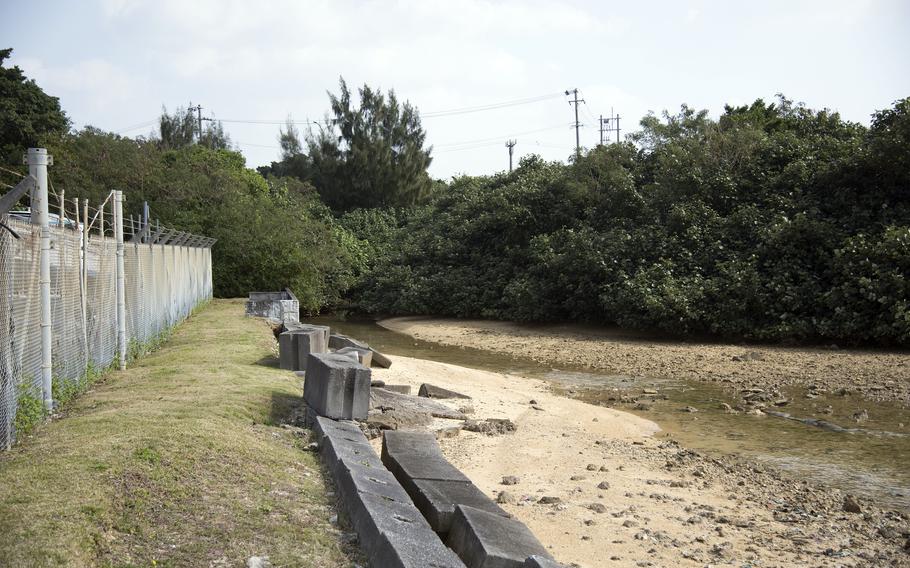Asia-Pacific
Study finds high PFAS levels near Okinawa air base, raising contamination concerns
Stars and Stripes February 6, 2025

Researchers found high levels of PFAS in waters around Kadena Marina near Kadena Air Base, Okinawa, pictured here on Feb. 5, 2025. (Keishi Koja/Stars and Stripes)
KADENA AIR BASE, Okinawa — Researchers found high concentrations of toxic “forever chemicals” in seawater offshore Okinawa in 2023, suggesting this critical U.S. installation may be the source, according to a recently released study.
A study by U.S. and Japanese scientists measured a total PFAS concentration of 164.3 parts per trillion in a single seawater sample taken in June 2023 near Kadena Marina, just north of the air base. The finding represents the highest total PFAS concentration among 61 surface water samples collected across Okinawa, including 46 coastal, 13 inland and two groundwater sites.
The study, conducted by the Okinawa Institute of Science and Technology and the University of Florida, was published Dec. 3 by the Royal Society of Chemistry.
Japan’s Environment Ministry in December set a water quality standard of 50 parts per trillion for PFOS and PFOA, component chemicals of PFAS. The U.S. Environmental Protection Agency refers to them as “forever chemicals” because they persist in the environment.

Researchers found high levels of PFAS in waters around Kadena Marina near Kadena Air Base, Okinawa, pictured here on Feb. 5, 2025. (Brian McElhiney/Stars and Stripes)
PFAS exposure has been linked to an increased risk of certain tumors in the liver, testicles, breasts and pancreas, according to the American Cancer Society. The EPA has stated that no level of PFAS is safe in drinking water.
A common source of PFAS contamination was aqueous film-forming foam used by military firefighters at U.S. and Japanese bases in the country. Both militaries have phased out its use, and U.S. Forces Japan announced last year that it had incinerated its last stockpiles. PFAS is also found in water-repellent fabrics and nonstick cookware, among other consumer products.
The 2023 study did not collect samples from former or current U.S. military bases on Okinawa and cannot directly identify them as the source of contamination, said Timothy Ravasi, a marine science professor at the Okinawa institute who contributed to the study.
“But it’s possible that there is a strong correlation there if you look at the map,” he said by email Tuesday.
Another researcher, University of Florida associate professor John Bowden, said pinpointing specific PFAS sources on Okinawa, including potential U.S. military activities, is difficult, particularly in populated areas.
“Typically, at least in the United States, the wastewater treatment plants only remove about 10% or so PFAS from the effluent that goes back into our water,” he said by phone Wednesday.
The 2023 study measured PFOS and PFOA at 78.9 parts per trillion in the marina sample.
In October 2017, the 18th Aerospace Medical Squadron commissioned an analysis of two water samples taken from a fire training site at Kadena Air Base. Maxxam Analytics laboratories found PFOS concentrations at 500 parts per trillion and PFOA at 66 parts per trillion, according to the publicly released results obtained by Stars and Stripes.
A 2019 report from the Okinawa Prefectural Enterprise Bureau indicated that two underground water surveys in Kadena town also detected high PFAS concentrations. The level detected was as high as 3,128 parts per trillion in Yara Ubuga in the town.
The 18th Wing at Kadena acknowledged questions about the 2023 study emailed by Stars and Stripes on Tuesday but had not provided responses as of Thursday afternoon.
The 2023 study found the second-highest total PFAS concentration, 144.2 parts per trillion, in a groundwater sample from Ukka Gaa Spring near Marine Corps Camp Hansen. PFOS and PFOA concentrations there measured 76.2 parts per trillion.
A seawater sample south of Kadena Air Base contained a total PFAS level of 85.8 parts per trillion. The PFOS and PFOA concentrations in that sample, at 44.6 parts per trillion, were below Japan’s safe water standard.
Bowden said he hopes to conduct further research on seasonal PFAS fluctuations and their potential impact on wildlife, fishing and recreation in more densely populated areas of the island.